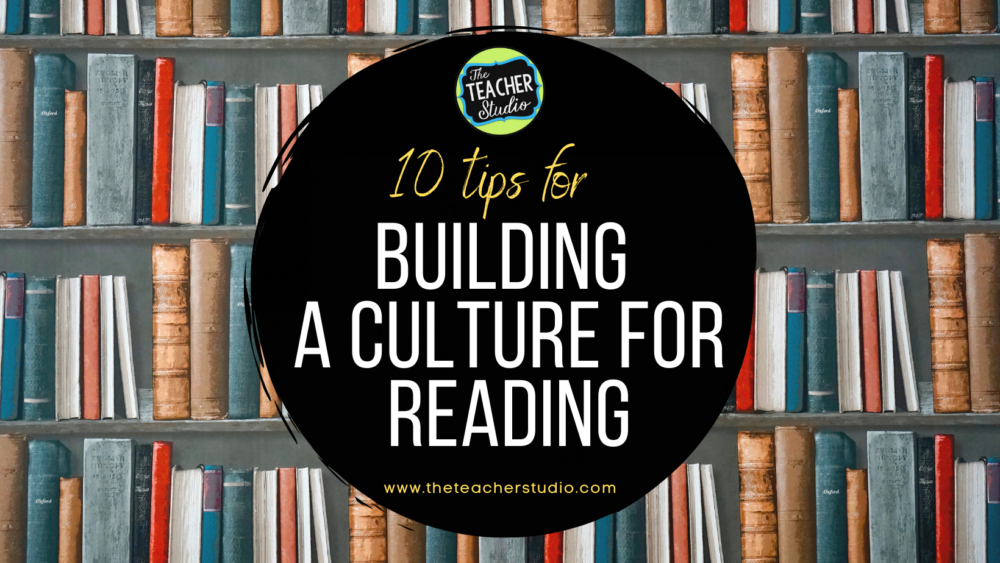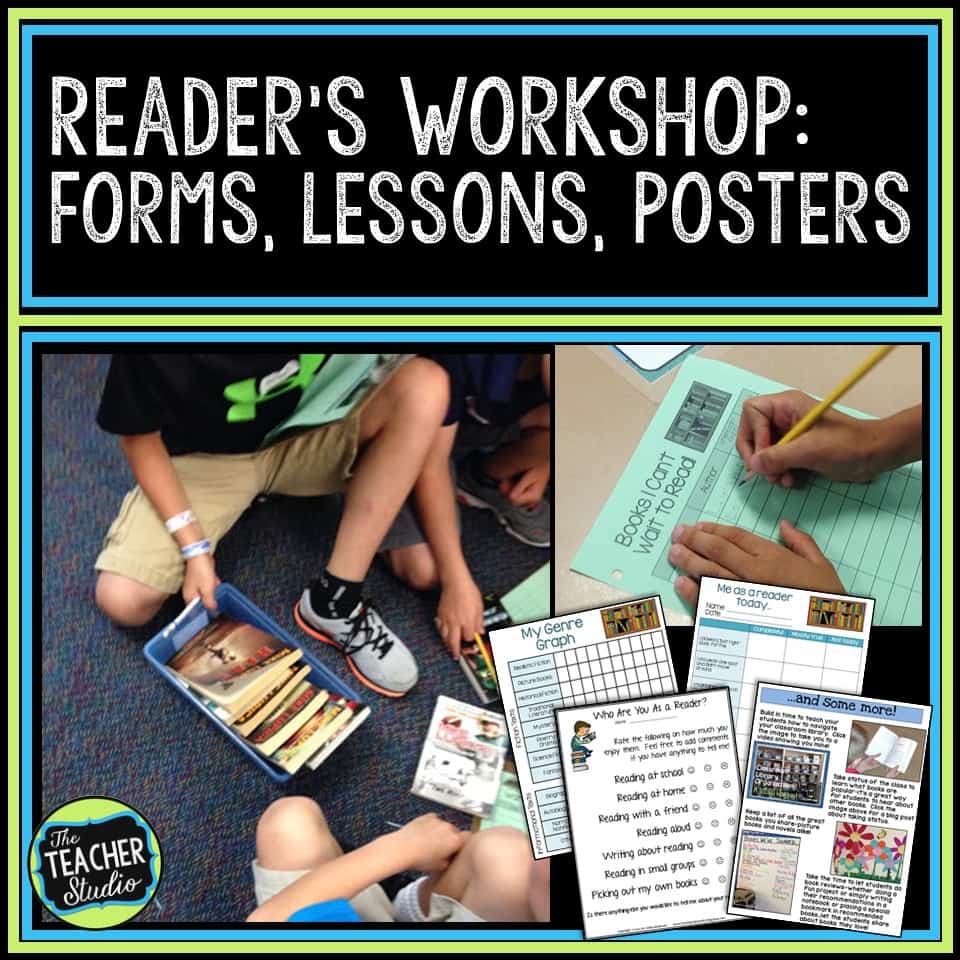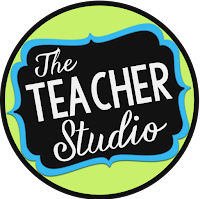Developing a love of reading seems to come naturally for some students, but for some–it takes a loving teacher to make the magic happen! Check out these ten tips for getting started building a culture for reading in YOUR class!
1. Share YOUR love of reading.
Whether you are in a “grown up” book club of your own or can simply model your love with HOW you read, how MUCH you read, or your excitement about new books–make sure your students know that you value reading and you are excited to help THEM find the books that will captivate them. I talk to my students about trying to get into the reading “zone” where you are so into your book that you lose track of time and the world around you. When that happens IN our class, we totally celebrate it! It’s a great way to help students reflect on their focus and their engagement.
2. Make sure students have access to books.
Whether you have a vital and evolving classroom library or need to beg, borrow, or steal visit the library (school or public), make sure you have plenty of books. It’s super important to have materials at a variety of levels with tons of different interest levels. Exploring discount stores, Scholastic, rummage sales, resale shops, and other places are great starting points for adding to your collection. If you are a newer teacher or changing grades, consider asking students and other teachers what is “trending” in their room before you invest too much! Think about organizing them in a simple, easy-to-use system to make everyone’s life easier! CLICK HERE for a post about how I organize my ridiculously large book collection!
3. Teach students about what a “just right” book is
This is a key part of helping my students transition back to school–and then I revisit it several times throughout the year. I want students to recognize all the factors that go into finding that “just right” book–including personal interests, level, genre, length, and more. We talk about abandoning books–and how it can be okay ONCE IN AWHILE, but if we become good book “pickers”, we won’t need to abandon many at all. I make sure to explicitly model all the ways we can preview books to see if they are good fits. At the beginning of the year, this is the number one thing I confer with students about. I really want them to know that it is NO FUN to read a book that isn’t a good fit.
4. Expose your class to different genres
Whether it be through full instructional units where you explicitly teach different genres, or are mindful of read aloud selections, or simply do a variety of book talks or other “focus” lessons on different genres, we can really SELL students on different types of books. We always have some students who are genre picky (think “I only read Harry Potter-like books), but with a little convincing, we can often open students up to amazing books they never would have picked on their own. Depending on your curriculum, you may even want to have the students graph their reading and track their trends. We even do a “historical fiction challenge” where I make a “code” on the wall (ex. red for books set during the Civil War, yellow for the Great Depression, and so on). Every time students finish a book of that time “era”, they make a paper link and add to our chain. Last year we had 132 historical fiction books read in February!
5. Want to build a culture for reading? Give them choices!
Sometimes we need to give students choices. Choices about WHAT materials they read. Choices about WHERE they read. Even choices about whether they read alone or with a buddy. Sometimes I’ll even take a class vote on what our next read aloud will be! We need to work to create a climate of readers where we are all celebrating books together. There is nothing better than listening to students “buzzing” about books when they come in from recess or are getting ready for lunch.
6. Get them talking about books
Whether we put sentence starters up on the wall, do fishbowl activities where we watch groups have discussions, or even find example videos online to “study”, teaching students how to talk about books is so important–so they can participate in whole class discussions AND small group book clubs. Want to read a post more about getting students talking in their book clubs? Check this one out! Again, some students do this naturally, but others need some coaching and encouraging.
7. Give them TIME to read self-selected books
Do I need to say more? I’m not talking about time to read “assigned” reading. Time. To. Read. Teach students how to develop their stamina and minimize distractions and work toward reading for extending periods of time. Let them get in that “reading zone”! After all, the way we get better at reading is TO READ! Have them keep lists of books they want to read and consider doing some self-assessments to monitor their own reading. Building habits take time. (Click the image for more)
8. Help students understand that reading is more than word calling
One thing that I have noticed about students who move to our school from other schools is that they often have a different view of what a “reader” is. They talk about reading “fast” and “thick books”. We work hard to help students see that reading is complicated! It’s about deep and rich understanding. Reading involves talking about ideas about books. It’s about seeing “movies” in our minds. It’s about rereading when things don’t make sense. Early in the year, I work with my students to understand how complicated reading is–and that we can set goals in all of these different areas to get better at reading. (Click the image to learn more about reading learning targets!)
9. Select interesting read alouds with a purpose
I think it’s so important to read aloud a variety of materials to our students…articles…poems…picture books…novels. The beauty of the read aloud is that we can decide WHY we want to read it. Is it to teach our students something? Purely for enjoyment? To introduce or reinforce a skill such as theme or setting? To study a character and how they change? The sky is the limit–but we should always KNOW our purpose and how our choices can impact our culture for reading.
For example, I start the year by reading a ton of picture books to model my thinking and other strategies and I read “Fish in a Tree” as a novel to really talk about characters, the setting of “school”, and how students treat each other. We have a lot of power and there are SO many amazing books. Choosing is so hard! The beauty of the read aloud is that we can expose students to texts that they may not have access to without us; we can “teach” more rigorous reading through our read alouds.
10. Remember to slow down and enjoy!
In our current climate of pushing standards and assessments and units and more, sometimes we need to just stop and savor what we are doing with our students. When my students are independently reading, and I am moving quietly among them conferring, sometimes I just stop and look around and the 25 little bodies who are in the process of becoming life-long readers. Pretty powerful!







